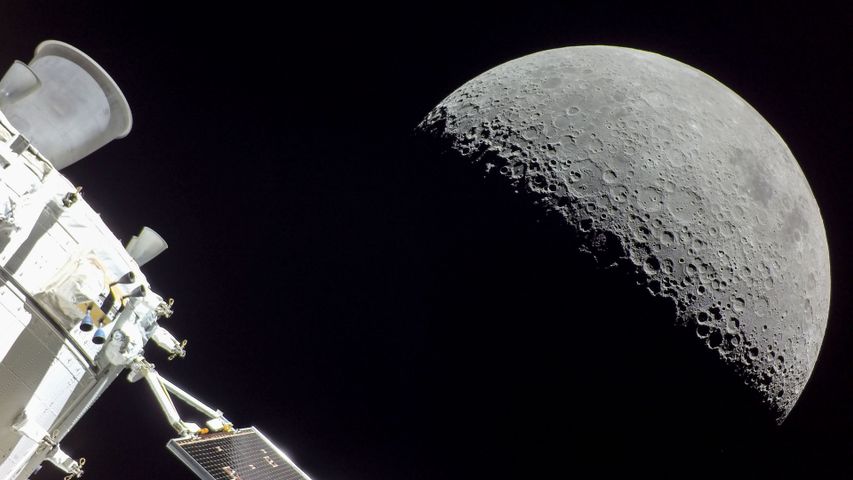Composite image of the 31 January 2018 lunar eclipse seen from Tokyo, Japan
© Kazuhiro Nogi/Getty Images
Composite image of the 31 January 2018 lunar eclipse seen from Tokyo, Japan
Today a total lunar eclipse will be visible around many parts of the globe. For an eclipse to qualify as ‘total’ the Moon must pass through the middle of the Earth’s shadow, casting a reddish pall over the entire visible surface of the Moon. Due to this reddish colour, a totally eclipsed Moon is sometimes called a ‘blood moon’. Few astronomers use this term, but scientists do recognise that a physics phenomenon called ‘Rayleigh scattering’ is at work when the Earth’s shadow blocks sunlight from the Moon during a lunar eclipse. This dispersion of light changes how we perceive the colour, and in this case, it makes the Moon appear blood red. Rayleigh scattering affects the way we perceive most colours, including the blue sky and the yellow sun.
Related Images
Bing Today Images




 The moon
The moon
 'Ring of fire' annular solar eclipse, Doha, Qatar
'Ring of fire' annular solar eclipse, Doha, Qatar
 The moon seen from the Orion spacecraft of NASA's Artemis mission
The moon seen from the Orion spacecraft of NASA's Artemis mission
 Moon rising, Tucson, Arizona
Moon rising, Tucson, Arizona
 Lunar eclipse above Mount Crested Butte, Colorado, USA
Lunar eclipse above Mount Crested Butte, Colorado, USA
 Composite photo showing the phases of the Moon
Composite photo showing the phases of the Moon
 Dolomite Mountains at night with the Milky Way, Italy
Dolomite Mountains at night with the Milky Way, Italy
 Swedish antenna at La Silla ESO Observatory, Chile
Swedish antenna at La Silla ESO Observatory, Chile

